AMTL 1 Curriculum Courses Equipment List
This page is here to provide more insights on gear for courses that fall within our AMTL 1 course curriculum. For simple, printable PDF versions of these lists, click on the corresponding link below:
Glacier Skill and Crevasse Rescue
Alpine Mountaineering and Technical Leadership, Part 1
Mt. Shuksan Skills and Climb (3 Day)
Mt. Shuksan Skills and Climb (4 Day)
Head
Beanie/Toque (Optional)

Optional. Wool or synthetic. Avoid windstopper material, it makes hearing difficult and you can overheat faster. This hat will primarily be used while sitting around camp, in cold or windy conditions, or while sleeping at night. Moreso recommended for trips in March-early June, unless you have personal preference. Hoods on your torso layers can also be used instead. If you are planning on wearing your beanie while climbing, make sure it can fit under your helmet (no pom-poms on the top of the hat).
Examples
 --> Ortovox Fleece Light Beanie
--> Ortovox Fleece Light Beanie
 --> Arc'teryx Rho Lightweight Wool Toque
--> Arc'teryx Rho Lightweight Wool Toque
Sun Hat
 Must have a hat or visor with a brim on it to keep the sun out of the face. You will be wearing this under the helmet so make sure it can fit under your helmet and is a comfortable fit. Sun hats without a button on the top are recommended for a comfortable fit. Synthetic sweat wicking material is preferred.
Must have a hat or visor with a brim on it to keep the sun out of the face. You will be wearing this under the helmet so make sure it can fit under your helmet and is a comfortable fit. Sun hats without a button on the top are recommended for a comfortable fit. Synthetic sweat wicking material is preferred.
i
i
i
Glacier Glasses
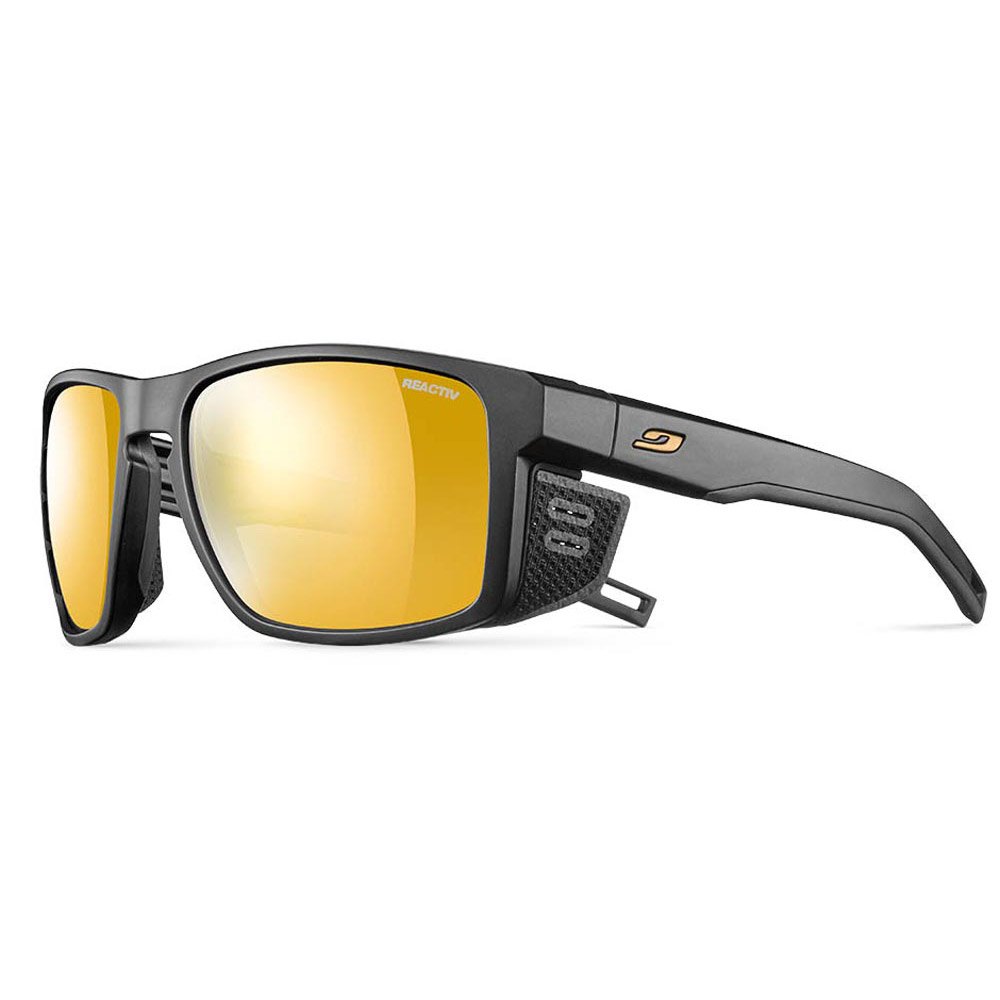 You CANNOT go on the course without legit eye protection. They are that important. Without adequate eyewear, the eyes can get sunburnt and in an extreme situation will give you temporary blindness. Choose a model with 100% UVA/UVB protection and side shields. Light will be coming at you from all sides, so make sure the glasses have side shields that cover your eyes from the top, side, and bottom. If light comes through around the lenses, you can often find extra side shields online, or you can fashion your own with duct tape. Look for lenses that have around 12% or less visible light transmission (VLT), in order to properly protect your eyes. Visible Light Transmission is a measurement of how many visible light waves transmit through a material. Keep in mind that those with lighter colored eyes should stay on the lower side for VLT as they tend to be more sensitive to light.
You CANNOT go on the course without legit eye protection. They are that important. Without adequate eyewear, the eyes can get sunburnt and in an extreme situation will give you temporary blindness. Choose a model with 100% UVA/UVB protection and side shields. Light will be coming at you from all sides, so make sure the glasses have side shields that cover your eyes from the top, side, and bottom. If light comes through around the lenses, you can often find extra side shields online, or you can fashion your own with duct tape. Look for lenses that have around 12% or less visible light transmission (VLT), in order to properly protect your eyes. Visible Light Transmission is a measurement of how many visible light waves transmit through a material. Keep in mind that those with lighter colored eyes should stay on the lower side for VLT as they tend to be more sensitive to light.
*Prescription Glasses - If you have prescription glasses then you have a couple of options: One is to go to www.sportrx.com, where they have some options to purchase glacier glasses with prescription lenses. Or you can check out the website www.cocoonseyewear.com and purchase Over-The-Glass (OTG) glasses to go over your prescription glasses. If you go this route make sure and purchase the pair with the least amount of visible light transmission (VLT).
*Contact Lenses - Please make sure you are aware of how to take care of your contact lenses out in the field and bring some extra. For more info about caring for contact lenses in the backcountry, click here.Examples
Medium to large size faces
Acceptable Lenses : Spectron 4, Spectron 3, REACTIV 2-4, REACTIV 2-3
Acceptable Lenses : Spectron 4, Spectron 3, REACTIV 2-4, REACTIV 2-3
Acceptable Lenses : Spectron 4, Spectron 3, REACTIV 2-4, REACTIV 2-3
Acceptable Lenses : Cat 4, Cat 3, Cat 2-4, Cat 1-3, Cat 2-3
Acceptable Lenses : Cat 4, Cat 3, Cat 2-4, Cat 1-3, Cat 2-3
Smaller sized faces
Acceptable Lenses : Spectron 4, Spectron 3, REACTIV 2-4, REACTIV 2-3
Acceptable Lenses : Spectron 4, Spectron 3, REACTIV 2-4, REACTIV 2-3
Cheaper option, also good for a back-up pair
Nose Protection (Optional)
i

i
i
Neck Gaiter
Hands
CLICK HERE for more info on Alpine Glove Systems
Liner Gloves
 These should be dexterous and comfortable, with little insulation. Make sure your gloves are made from a wool or synthetic material, no cotton. It can be nice to get gloves with touchscreen compatibility so you don't need to take off your gloves to use your phone. In mid-season conditions, UPF rated liner gloves will help prevent the back of your hands from sunburns.
These should be dexterous and comfortable, with little insulation. Make sure your gloves are made from a wool or synthetic material, no cotton. It can be nice to get gloves with touchscreen compatibility so you don't need to take off your gloves to use your phone. In mid-season conditions, UPF rated liner gloves will help prevent the back of your hands from sunburns.
Examples
 --> Men's Outdoor Research Vigor Gloves
--> Men's Outdoor Research Vigor Gloves
 --> Women's Outdoor Research Vigor Gloves
--> Women's Outdoor Research Vigor Gloves
 --> Black Diamond Lightweight Screentap Gloves
--> Black Diamond Lightweight Screentap Gloves
i
Mid-weight Soft-shell Gloves
 This glove needs to have a durable palm, some insulation value, and should be made out of soft-shell or breathable material. These gloves should have some dexterity so you can keep them on while tying knots, belaying, and managing the rope. These do not need to be waterproof. In the good ol' PNW snowpack they are going to get wet regardless of waterproof material or not, and a more breathable fabric will dry out much faster.
This glove needs to have a durable palm, some insulation value, and should be made out of soft-shell or breathable material. These gloves should have some dexterity so you can keep them on while tying knots, belaying, and managing the rope. These do not need to be waterproof. In the good ol' PNW snowpack they are going to get wet regardless of waterproof material or not, and a more breathable fabric will dry out much faster.
Examples
 --> Black Diamond Torque Gloves
--> Black Diamond Torque Gloves
 --> Men's Mountain Equipment Super Alpine Glove
--> Men's Mountain Equipment Super Alpine Glove
 --> Women's Mountain Equipment Super Alpine Glove
--> Women's Mountain Equipment Super Alpine Glove
Insulated Waterproof Gloves
 These are your reserve gloves, for when it's really cold, rainy, late at camp, or summit day. They may also be used during snow school while practicing glacier travel techniques such as self-arresting, where your hands will be in the snow for prolonged periods of time. They need to be dexterous enough to handle ropes, carabiners, and ice axes. The waterproof membrane will help to protect from high winds as well.
These are your reserve gloves, for when it's really cold, rainy, late at camp, or summit day. They may also be used during snow school while practicing glacier travel techniques such as self-arresting, where your hands will be in the snow for prolonged periods of time. They need to be dexterous enough to handle ropes, carabiners, and ice axes. The waterproof membrane will help to protect from high winds as well.Examples
 --> Black Diamond Renegade Glove
--> Black Diamond Renegade Glove
 --> Men's Outdoor Research Arete II GORE-TEX Glove
--> Men's Outdoor Research Arete II GORE-TEX Glove
 --> Women's Outdoor Research Arete II GORE-TEX Glove
--> Women's Outdoor Research Arete II GORE-TEX Glove
Fishing Gloves (Optional)
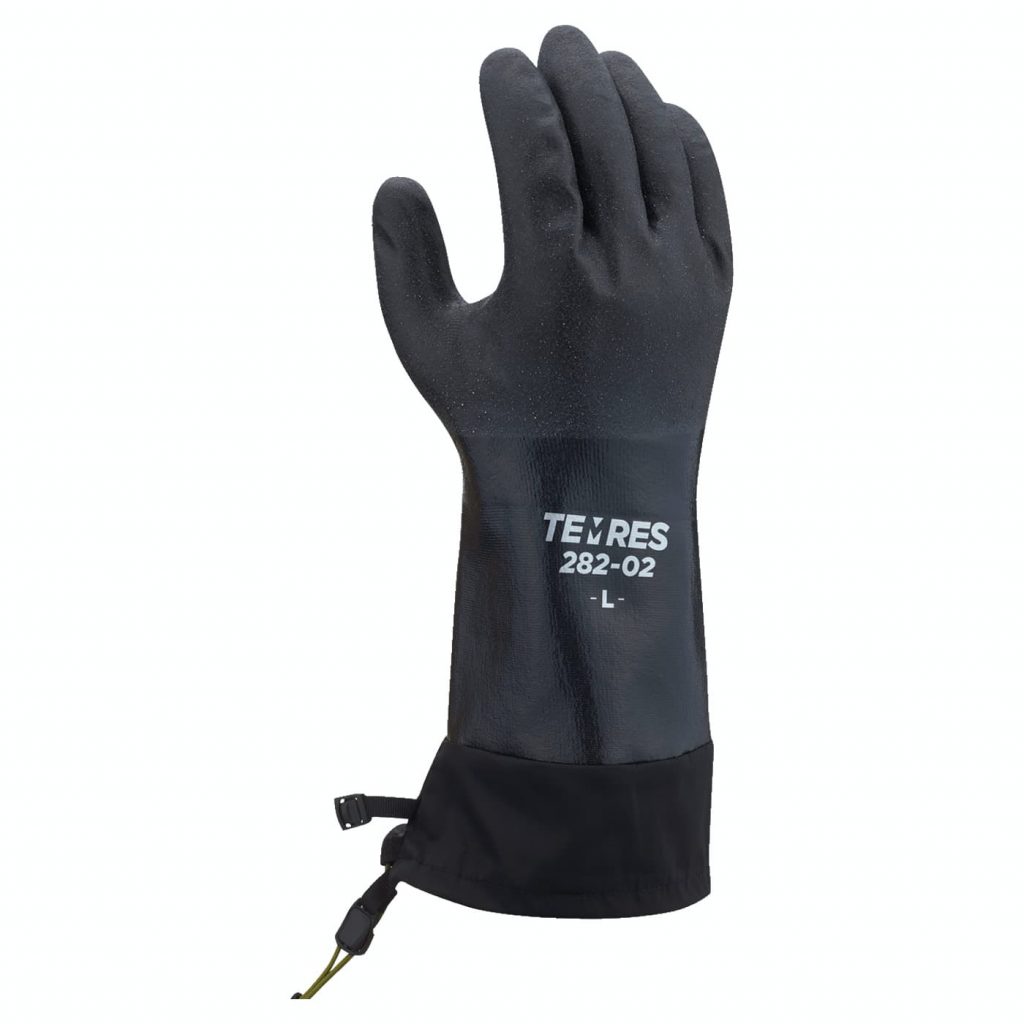 Optional, but highly recommended. These gloves are a non-insulated hardshell glove that will keep your hands dry all day, which can be nice when practicing snow skills such as self arrest, where your hands will be in the wet snow for hours. Due to the lack of breathability in these gloves, it is recommended to bring up two pairs of liner gloves, and switch these out to dry as your hands get sweaty. You can often find these at your local fishing stores. They will also be available in store the morning of your course.
Optional, but highly recommended. These gloves are a non-insulated hardshell glove that will keep your hands dry all day, which can be nice when practicing snow skills such as self arrest, where your hands will be in the wet snow for hours. Due to the lack of breathability in these gloves, it is recommended to bring up two pairs of liner gloves, and switch these out to dry as your hands get sweaty. You can often find these at your local fishing stores. They will also be available in store the morning of your course.
Examples
i
i
i
i
i
Torso
CLICK HERE for more info on The Layering System
Sports Bra
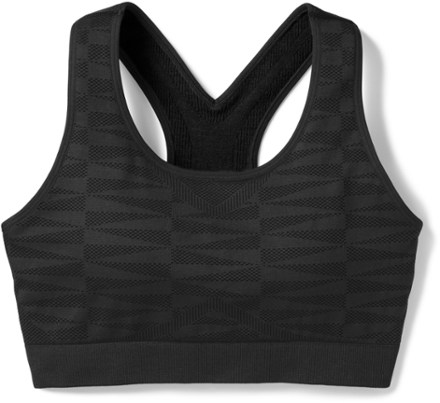 Comfortable, activewear. Choose a model without plastic or metal strap adjustments. These can dig into your shoulders while wearing a pack and can lead to injury. Look for a strap that lays flat and smooth against your skin. Bring 2 - one to change into if the other gets wet so you can dry it out. A wet sports bra can make it very difficult to get warm. Materials: wool or synthetic.
Comfortable, activewear. Choose a model without plastic or metal strap adjustments. These can dig into your shoulders while wearing a pack and can lead to injury. Look for a strap that lays flat and smooth against your skin. Bring 2 - one to change into if the other gets wet so you can dry it out. A wet sports bra can make it very difficult to get warm. Materials: wool or synthetic.Examples
 --> Smartwool Merino Sport Seamless Racerback Bra
--> Smartwool Merino Sport Seamless Racerback Bra
 --> Icebreaker Merino Sprite Racerback Bra
--> Icebreaker Merino Sprite Racerback Bra
i
Base Layer

Examples
 --> Men's Patagonia Capilene Cool Daily Hoody
--> Men's Patagonia Capilene Cool Daily Hoody
 --> Women's Patagonia Capilene Cool Daily Hoody
--> Women's Patagonia Capilene Cool Daily Hoody
i
i
Active Insulation Jacket (Midlayer Jacket)
 This versatile piece is typically worn when it's cold and you are on the move, or you only need a small amount of added insulation when not moving in warmer conditions. Since we generate a lot of heat while moving (especially uphill), the key features of this piece should be lightweight and breathable. Conversely, because this piece is lightweight and breathable, it does not work as a good insulation piece in colder conditions when stationary.
This versatile piece is typically worn when it's cold and you are on the move, or you only need a small amount of added insulation when not moving in warmer conditions. Since we generate a lot of heat while moving (especially uphill), the key features of this piece should be lightweight and breathable. Conversely, because this piece is lightweight and breathable, it does not work as a good insulation piece in colder conditions when stationary.
Examples
Fleece
 --> Men's Patagonia R1 Full-Zip Hoody
--> Men's Patagonia R1 Full-Zip Hoody
 --> Women's Patagonia R1 Full-Zip Hoody
--> Women's Patagonia R1 Full-Zip Hoody
 --> Women's Mountain Equipment Lumiko Hooded Jacket
--> Women's Mountain Equipment Lumiko Hooded Jacket
 --> Men's Mountain Equipment Lumiko Hooded Jacket
--> Men's Mountain Equipment Lumiko Hooded Jacket
40g/m2
 --> Men's Montbell U.L. Thermawrap Parka
--> Men's Montbell U.L. Thermawrap Parka
 --> Women's Montbell U.L. Thermawrap Parka
--> Women's Montbell U.L. Thermawrap Parka
 --> Men's Arc'teryx Proton Lightweight Hoody
--> Men's Arc'teryx Proton Lightweight Hoody
60g/m2
 --> Men's Patagonia Nano Air Hoody
--> Men's Patagonia Nano Air Hoody
 --> Women's Patagonia Nano Air Hoody
--> Women's Patagonia Nano Air Hoody
 --> Men's Arc'teryx Proton LT Hoody
--> Men's Arc'teryx Proton LT Hoody
 --> Women's Arc'teryx Proton Hoody
--> Women's Arc'teryx Proton Hoody
i
Lightweight Soft-shell or Windproof Jacket (Optional)
 Optional, but highly recommended for those looking to spend more time being active in the mountains. This layer is very versatile and offers a lot of adaptability to variable conditions. Soft-shell is defined as weather 'resistant' and breathable. The main thing we are looking for here is for something to cut the wind. There is a slight spectrum for this type of layer, on one end is the more windproof but less breathable jacket, and on the other there is the less windproof but more breathable jacket. The thin windproof jackets are going to be lighter and more compact, and the more breathable jackets will be more versatile. Always remember that in super high winds, your hardshell jacket seconds as a more effective windproof layer.
Optional, but highly recommended for those looking to spend more time being active in the mountains. This layer is very versatile and offers a lot of adaptability to variable conditions. Soft-shell is defined as weather 'resistant' and breathable. The main thing we are looking for here is for something to cut the wind. There is a slight spectrum for this type of layer, on one end is the more windproof but less breathable jacket, and on the other there is the less windproof but more breathable jacket. The thin windproof jackets are going to be lighter and more compact, and the more breathable jackets will be more versatile. Always remember that in super high winds, your hardshell jacket seconds as a more effective windproof layer.
Examples
Thin, light, windproof jackets
 --> Men's Patagonia Houdini Jacket
--> Men's Patagonia Houdini Jacket
 --> Women's Patagonia Houdini Jacket
--> Women's Patagonia Houdini Jacket
 --> Men's Arc'teryx Squamish Hoody
--> Men's Arc'teryx Squamish Hoody
 --> Women's Arc'teryx Squamish Hoody
--> Women's Arc'teryx Squamish Hoody
Breathable, wind resistant jackets
 --> Men's Patagonia Houdini Air Jacket
--> Men's Patagonia Houdini Air Jacket
Passive Insulation Jacket
 The goal for this piece is to add warmth to an internal layering system. Depending on clothing system/environmental conditions, may be worn underneath or over top of your shell jacket. The weight and design of this piece will vary based on the other items of climbing that you are bringing. Generally, jackets with 60g/m2 - 100g/m2 of synthetic sheet insulation are adequate. For Down, look for a fill weight of 100g-150g of 700 or higher fill power. If your general layers seem on the lighter side, or you run cold then go for a heavier weight for this piece. We strongly recommend synthetic insulation in the Cascades due to our 'wet' climate. While down is totally acceptable, be aware that once down gets wet, it compresses and loses its insulation value. This piece typically has a weather resistant outer fabric, so it can be worn over layers during stops/breaks, or in cold situations, higher up on the mountain. For early season conditions, consider pieces with higher insulation values, and for late season conditions, consider pieces with lower insulation values.
The goal for this piece is to add warmth to an internal layering system. Depending on clothing system/environmental conditions, may be worn underneath or over top of your shell jacket. The weight and design of this piece will vary based on the other items of climbing that you are bringing. Generally, jackets with 60g/m2 - 100g/m2 of synthetic sheet insulation are adequate. For Down, look for a fill weight of 100g-150g of 700 or higher fill power. If your general layers seem on the lighter side, or you run cold then go for a heavier weight for this piece. We strongly recommend synthetic insulation in the Cascades due to our 'wet' climate. While down is totally acceptable, be aware that once down gets wet, it compresses and loses its insulation value. This piece typically has a weather resistant outer fabric, so it can be worn over layers during stops/breaks, or in cold situations, higher up on the mountain. For early season conditions, consider pieces with higher insulation values, and for late season conditions, consider pieces with lower insulation values. Examples
Down
 --> Men's Rab Microlight Alpine Jacket
--> Men's Rab Microlight Alpine Jacket
 --> Women's Rab Microlight Alpine Jacket
--> Women's Rab Microlight Alpine Jacket
 --> Men's Patagonia Down Sweater Hoody
--> Men's Patagonia Down Sweater Hoody
 --> Women's Patagonia Down Sweater Hoody
--> Women's Patagonia Down Sweater Hoody
Warmer Down Options
 --> Men's Rab Electron Pro Jacket
--> Men's Rab Electron Pro Jacket
 --> Women's Rab Electron Pro Jacket
--> Women's Rab Electron Pro Jacket
 --> Men's Arc'teryx Thorium Hoody
--> Men's Arc'teryx Thorium Hoody
 --> Women's Arc'teryx Thorium Hoody
--> Women's Arc'teryx Thorium Hoody
60g/m2
 --> Men's Patagonia DAS Light Hoody
--> Men's Patagonia DAS Light Hoody
 --> Women's Patagonia DAS Light Hoody
--> Women's Patagonia DAS Light Hoody
 --> Men's Arc'teryx Atom LT Hoody
--> Men's Arc'teryx Atom LT Hoody
 --> Women's Arc'teryx Atom LT Hoody
--> Women's Arc'teryx Atom LT Hoody
Warmer synthetic options
Waterproof (Hard-shell) Jacket - Rentals Available
 The Hard-shell is defined as a waterproof piece. This layer gives protection against precipitation and high winds. This jacket should be non-insulated and have a helmet compatible hood. If insulation is needed, it can be worn over one or more of the insulation layers. When sizing this piece, make sure you can fit at least two other layers underneath. For fabric, make sure to choose a jacket with 3-layer construction. These will be the most waterproof, breathable, and durable jackets on the market - a must in the Cascades. The waterproof rating is based on pressure, and the lesser constructed jackets will let water through from simple things like sitting or the pressure of backpack straps when carrying your pack. Gore-tex Pro will offer the best protection against the rain, but many brands offer hardshells with Gore-tex or their own proprietary membranes that will work as well. That said, our guides always carry a shell jacket in the mountains, since mountain weather can always change. We want you to be prepared for the worst case scenario.
The Hard-shell is defined as a waterproof piece. This layer gives protection against precipitation and high winds. This jacket should be non-insulated and have a helmet compatible hood. If insulation is needed, it can be worn over one or more of the insulation layers. When sizing this piece, make sure you can fit at least two other layers underneath. For fabric, make sure to choose a jacket with 3-layer construction. These will be the most waterproof, breathable, and durable jackets on the market - a must in the Cascades. The waterproof rating is based on pressure, and the lesser constructed jackets will let water through from simple things like sitting or the pressure of backpack straps when carrying your pack. Gore-tex Pro will offer the best protection against the rain, but many brands offer hardshells with Gore-tex or their own proprietary membranes that will work as well. That said, our guides always carry a shell jacket in the mountains, since mountain weather can always change. We want you to be prepared for the worst case scenario.
Examples
 --> Women's Patagonia Storm10 Jacket
--> Women's Patagonia Storm10 Jacket
 --> Women's Arc'teryx Alpha AR
--> Women's Arc'teryx Alpha AR
 --> Men's Patagonia Triolet Jacket
--> Men's Patagonia Triolet Jacket
 --> Women's Patagonia Triolet Jacket
--> Women's Patagonia Triolet Jacket
Budget option
 --> Men's Patagonia Torrentshell 3L Jacket
--> Men's Patagonia Torrentshell 3L Jacket
 --> Women's Patagonia Torrentshell 3L Jacket
--> Women's Patagonia Torrentshell 3L Jacket
i
i
Lower Body
Undergarments

 It is not necessary to bring a change of undergarments for each day in the backcountry. A good rule of thumb is 1 pair for each 2-3 days spent in the backcountry. For courses with front country camping, a change of undergarments for each day spent in the front country may be preferred. Synthetic or wool only.
It is not necessary to bring a change of undergarments for each day in the backcountry. A good rule of thumb is 1 pair for each 2-3 days spent in the backcountry. For courses with front country camping, a change of undergarments for each day spent in the front country may be preferred. Synthetic or wool only.
Examples
 --> Women's Patagonia Barely Hipster
--> Women's Patagonia Barely Hipster
 --> Men's Patagonia Sender Boxer Brief
--> Men's Patagonia Sender Boxer Brief
 --> Women's Icebreaker Merino Siren Thong
--> Women's Icebreaker Merino Siren Thong
 --> Men's SAXX Quest Boxer Briefs
--> Men's SAXX Quest Boxer Briefs
Base Layer Pant (Optional)
 Optional. Can be nice for wearing around camp, in the tent, at night, and in early season (March-June) conditions.
Optional. Can be nice for wearing around camp, in the tent, at night, and in early season (March-June) conditions.
Examples
 --> Men's Patagonia Capilene Midweight Bottoms
--> Men's Patagonia Capilene Midweight Bottoms
 --> Women's Patagonia Capilene Midweight Bottoms
--> Women's Patagonia Capilene Midweight Bottoms
i
i
Soft-shell Pants
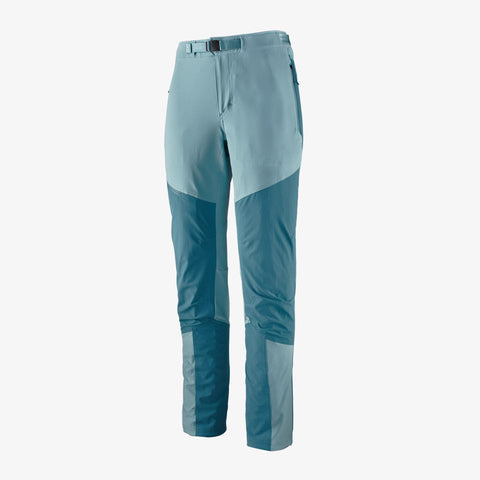 This is your action layer. Should be stretchy, breathable and wind/snow-resistant. They should not restrict movement. A thigh pocket is a useful feature for storing small items. This layer will be worn for the majority of your trip.
This is your action layer. Should be stretchy, breathable and wind/snow-resistant. They should not restrict movement. A thigh pocket is a useful feature for storing small items. This layer will be worn for the majority of your trip.
Examples
 --> Women's Patagonia Altvia Alpine Pants
--> Women's Patagonia Altvia Alpine Pants
 --> Men's Patagonia Altvia Alpine Pants
--> Men's Patagonia Altvia Alpine Pants
 --> Men's Arc'teryx Gamma LT Pant
--> Men's Arc'teryx Gamma LT Pant
 --> Women's Arc'teryx Gamma LT Pant
--> Women's Arc'teryx Gamma LT Pant
 --> Women's Rab Ascendor AS Climbing Pant
--> Women's Rab Ascendor AS Climbing Pant
 --> Men's Rab Ascendor AS Climbing Pant
--> Men's Rab Ascendor AS Climbing Pant
Insulated Pant (Optional)

In early season (March-early June), those who tend to run cold should consider insulated pants with full side zips. They are very cozy and are easy to take on and off even with your boots and crampons on the feet. These would go over your soft-shell pants and/or hard-shell pants when conditions are cold or you are not moving.
Examples
 --> Women's Montbell Tec Thermawrap Pant
--> Women's Montbell Tec Thermawrap Pant
 --> Mountain Equipment Compressor Pant
--> Mountain Equipment Compressor Pant
i
Waterproof (Hard-shell) Pants - Rentals Available
 Similar to the hard shell jacket, these should be non-insulated and have a 3-layer or 2.5 layer construction. Full side zips are highly recommended but not necessary. At least a 1/4 length side zip is ideal as this will allow you to put on and take off this layer while you are wearing mountaineering boots.
Similar to the hard shell jacket, these should be non-insulated and have a 3-layer or 2.5 layer construction. Full side zips are highly recommended but not necessary. At least a 1/4 length side zip is ideal as this will allow you to put on and take off this layer while you are wearing mountaineering boots.
Examples
 --> Men's Rab Downpour Plus 2.0 Waterproof Pants
--> Men's Rab Downpour Plus 2.0 Waterproof Pants
 --> Women's Rab Downpour Plus 2.0 Waterproof Pants *Short inseam available
--> Women's Rab Downpour Plus 2.0 Waterproof Pants *Short inseam available
 --> Men's Marmot PreCip Eco Full Zip Pants
--> Men's Marmot PreCip Eco Full Zip Pants
 --> Women's Marmot PreCip Eco Full Zip Pants *Short inseam available
--> Women's Marmot PreCip Eco Full Zip Pants *Short inseam available
i
i
Feet
Socks

Light to mid weight socks are recommended. We want to let the insulation of the boot do the work for you. A lighter weight sock will allow for a more accurate boot fit, and ample room for your feet to swell. This is important because we do not want to inhibit blood flow to the feet, the most important factor when trying to keep your feet warm. Thinner sock are also less likely to cause blisters and are often better at moisture wicking. Adjust your sock system ahead of time to perfect your boot fit. Thicker socks can restrict toe movement and blood flow. For those who are blister prone, trying a two layer sock system with a liner sock and a midweight/lightweight insulation sock is a solution used by some to decrease the chance of blistering. Bring 2-3 pair, so you can change them out when one pair gets wet. Also if you sleep cold, think about bringing a thicker pair of socks for use at night.
Examples
 --> Men's Darn Tough Midweight Socks
--> Men's Darn Tough Midweight Socks
 --> Women's Darn Tough Midweight Socks
--> Women's Darn Tough Midweight Socks
i
i
i
Mountaineering Boots - Rentals Available

 Perhaps the most important piece of equipment on this list. These boots must have a stiff shank, be crampon compatible, waterproof, and insulated.
Perhaps the most important piece of equipment on this list. These boots must have a stiff shank, be crampon compatible, waterproof, and insulated.
Examples
Modern Synthetic Double Boots
 --> La Sportiva G2 Evo *Goes up to size US16M/17W, and down to US5M/US6W.
--> La Sportiva G2 Evo *Goes up to size US16M/17W, and down to US5M/US6W.
4 Season Single Boots
 --> Men's La Sportiva Nepal Cube
--> Men's La Sportiva Nepal Cube
 --> Women's La Sportiva Nepal Cube
--> Women's La Sportiva Nepal Cube
 --> Men's Scarpa Mont Blanc Pro
--> Men's Scarpa Mont Blanc Pro
 --> Women's Scarpa Mont Blanc Pro
--> Women's Scarpa Mont Blanc Pro
 --> Men's Lowa Alpine Expert II GTX
--> Men's Lowa Alpine Expert II GTX
 --> Women's Lowa Alpine Expert II GTX
--> Women's Lowa Alpine Expert II GTX
3 Season Single Boots
 --> Men's La Sportiva Aequilibrium LT GTX
--> Men's La Sportiva Aequilibrium LT GTX
 --> Women's La Sportiva Aequilibrium LT GTX
--> Women's La Sportiva Aequilibrium LT GTX
 --> Men's Lowa Cadin II GTX Mid
--> Men's Lowa Cadin II GTX Mid
 --> Women's Lowa Cadin II GTX Mid
--> Women's Lowa Cadin II GTX Mid
Approach Shoes
Examples
 --> Women's La Sportiva TX2 EVO
--> Women's La Sportiva TX2 EVO
i
i
Gaiters (Optional) - Rentals Available

Examples
 --> Outdoor Research Crocodile Gore-Tex Gaiters
--> Outdoor Research Crocodile Gore-Tex Gaiters
i
i
i
i
i
i
Mountaineering Equipment
Ice Axe - Rentals Available
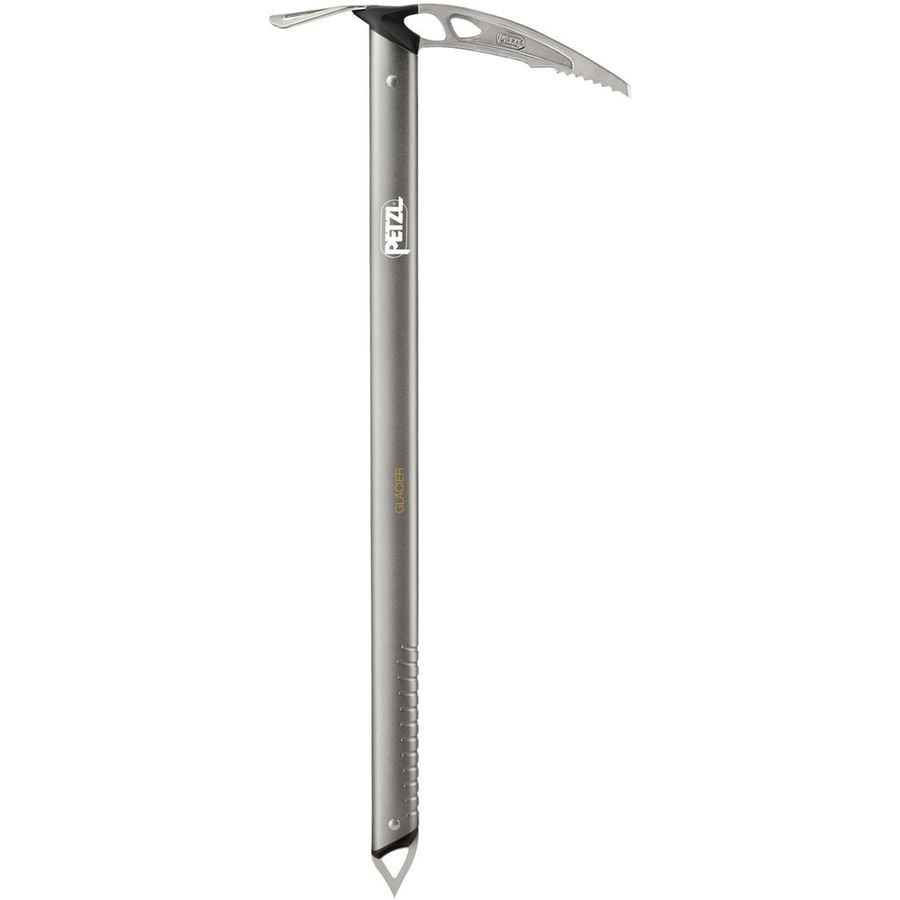 A straight shaft is recommended due to them being lighter and cheaper, and an adze is required. If you are planning on doing more advanced mountaineering then a semi-technical axe may be a good investment, reach out for questions. Use the following info as a rough guide on length. Ice axe leashes are not required and not recommended.
A straight shaft is recommended due to them being lighter and cheaper, and an adze is required. If you are planning on doing more advanced mountaineering then a semi-technical axe may be a good investment, reach out for questions. Use the following info as a rough guide on length. Ice axe leashes are not required and not recommended.Examples
Semi-Technical Axes
i
i
i
i
i
Mountaineering Harness - Rentals Available
 Must be UIAA or CE rated for climbing. Make sure your harness is less than 10 years old. For this particular course a simple lightweight mountaineering harness is what you want to look for for your time on the mountain. This harness should be light and packable. Having releasable leg loops is a desired feature so you can put on and take off the harness with boots and crampons still on. If you own a rock climbing harness that will also work for this course. If you are on the AMTL 1 or Alpinism 2 courses, it is recommended to bring along a rock harness as well for the rock climbing portion of the course. When sizing your harness, make sure it will fit over any layers you plan on wearing.
Must be UIAA or CE rated for climbing. Make sure your harness is less than 10 years old. For this particular course a simple lightweight mountaineering harness is what you want to look for for your time on the mountain. This harness should be light and packable. Having releasable leg loops is a desired feature so you can put on and take off the harness with boots and crampons still on. If you own a rock climbing harness that will also work for this course. If you are on the AMTL 1 or Alpinism 2 courses, it is recommended to bring along a rock harness as well for the rock climbing portion of the course. When sizing your harness, make sure it will fit over any layers you plan on wearing.
Examples
Alpine Harnesses
 --> Blue Ice Choucas Pro Harness
--> Blue Ice Choucas Pro Harness
Rock Harnesses
 --> Petzl Luna Harness *Women-specific
--> Petzl Luna Harness *Women-specific
-i
i
i
i
i
Climbing Helmet - Rentals Available

Must be UIAA or CE rated for climbing. Make sure it is a good fit for your head. Keep in mind that while foam helmets tend to be lighter and are often used to save weight, they are much more fragile.
Examples
 --> Petzl Meteora *Ponytail compatible
--> Petzl Meteora *Ponytail compatible
 --> Petzl Borea *Ponytail compatible
--> Petzl Borea *Ponytail compatible
 --> Men's Black Diamond Half Dome
--> Men's Black Diamond Half Dome
 --> Women's Black Diamond Half Dome *Ponytail compatible
--> Women's Black Diamond Half Dome *Ponytail compatible
i
i
ii
Crampons - Rentals Available
 Must be steel crampons, as we will be traveling on glacial ice. Aluminum crampons are not allowed for this course. Twelve point crampons are highly recommended. Make sure the crampons are compatible with your mountaineering boots. There are three commonly seen types of crampons:
Must be steel crampons, as we will be traveling on glacial ice. Aluminum crampons are not allowed for this course. Twelve point crampons are highly recommended. Make sure the crampons are compatible with your mountaineering boots. There are three commonly seen types of crampons:
Universal Crampons: Also called strap crampons, these crampons come with both a heel and a toe basket. They are compatible with all types of boots. However, on technical terrain, you may experience some slippage between the crampon and the boot, decreasing your stability on that terrain. This configuration is recommended on non-technical terrain or when you are using them footwear other than mountaineering boots.
Semi Automatic Crampons: Sometimes called hybrid, mixed, or semi-step crampons, these crampons come with a toe basket and a heel lever and are a hybrid between universal and fully automatic crampons. These crampons are compatible with boots that have stiff sole and a heel welt. All technical mountaineering boots will have heel welts. This configuration is great for general mountaineering objectives and when wearing 3-season mountaineering boots (sometimes called 3/4 shank boots).
Fully Automatic Crampons: Also called step-in crampons, these crampons come with a wire bail for the toe piece and a heel lever. They are compatible with boots that have a rigid sole as well as a toe and a heel welt. If the crampons are properly adjusted to the boot, fully automatic crampons will have the least slippage between the boot and the crampon and provide the most security. This crampon configuration is recommended for mixed climbing, ice climbing, and ski mountaineering. It will also work for general mountaineering objectives as long as they are compatible with your boots.
Some companies, such as Petzl, sell additional parts allow you to modify the configuration of your crampons between these three types.
Examples
Rock Shoes - Rentals Available
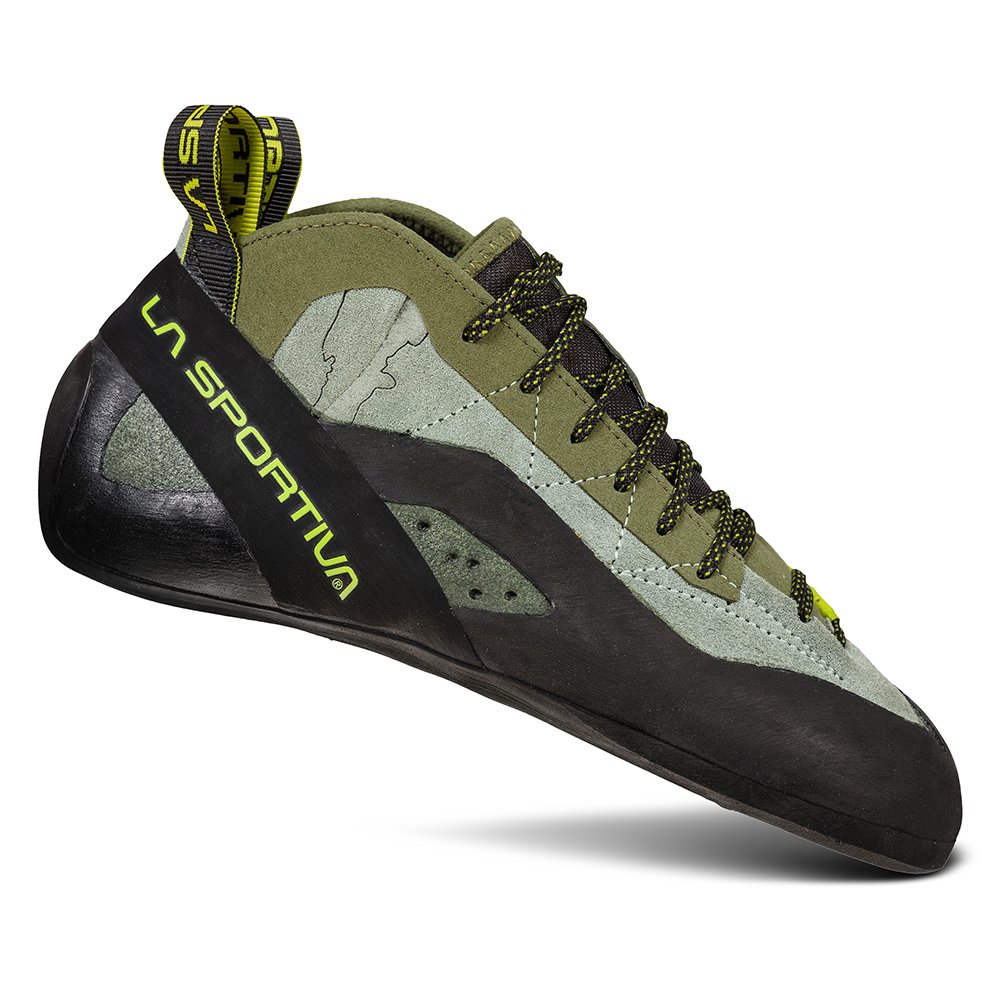
NOT REQUIRED FOR GSCR, BSC, Glacier Peak, or 3-Day Shuksan Courses. Optional for Alpinism 1 and Shuksan 4-Day Sulphide courses. Required for Alpinism 2 and AMTL 1 courses. Focus on comfort, so they can be worn all day without having to take off shoes between pitches. Avoid technical or aggressive rock shoes with a downturn. Avoid curled toes when sizing.
Examples
i
i
Carabiners

Must be UIAA or CE rated for climbing.
For specific numbers of each type of carabiners required for your course, reference your course's equipment list.
Examples
Locking carabiners
 --> Black Diamond PearLock Screwgate Carabiner
--> Black Diamond PearLock Screwgate Carabiner
Non-locking wire gate carabiners
1
1
Belay Device

NOT REQUIRED FOR BSC, Glacier Peak Courses. Optional for GSCR courses. Required for, Alpinism 1, Alpinism 2, AMTL 1, and Shuksan courses. Bring an auto-blocking device that accepts two ropes.
Examples
 --> Black Diamond ATC Guide *Not the Black Diamond ATC Alpine Guide
--> Black Diamond ATC Guide *Not the Black Diamond ATC Alpine Guide
1
i
Sewn-Slings

Must be UIAA or CE rated for climbing. While nylon is preferred for use with gloves and ease of untying knots, Dyneema is acceptable.
For specific numbers of each type of sling required for your course, reference your course's equipment list.
Examples
 --> Black Diamond 18mm Nylon Runner
--> Black Diamond 18mm Nylon Runner
i
Rappel Backup

NOT REQUIRED FOR GSCR, BSC, Glacier Peak, or 3-Day Shuksan Courses. Optional for Alpinism 1 and Shuksan 4-Day Sulphide courses. Required for Alpinism 2 and AMTL 1 courses. Also called a "third hand", a rappel backup is used when you are rappelling as an added measure of safety to prevent ground falls.
Prusiks

CLICK HERE for more info on Prusiks
Examples
 --> AAI Prusik Set
--> AAI Prusik Set
i
i
Headlamp
300-450 lumens is a good range. Make sure to bring extra batteries or a way to recharge. If you plan on leading personal mountaineering trips after the course, err on the side of more lumens, as it can make a big difference when navigating complex terrain in the dark.
Examples
i
Trekking Poles - Rentals Available

Examples
 --> Black Diamond Distance FLZ
--> Black Diamond Distance FLZ
 --> MSR DynaLock Explore Backcountry
--> MSR DynaLock Explore Backcountry
 --> Black Diamond Expedition 3.
--> Black Diamond Expedition 3.
.
.
.
Day Pack

REQUIRED FOR GSCR or Glacier Peak Courses. Optional for BSC, 3-Day Shuksan, Alpinism 1 and Shuksan 4-Day Sulphide courses. Required for Alpinism 2 and AMTL 1 courses. 20L to 35L is an ideal size for this pack. During AMTL 1 and Alp 2 courses, this pack will be used during the rock climbing portions to carry group gear, personal climbing gear, extra layers, water, and snacks. It can also be used as a summit pack for Shuksan and Baker climbs, though it is definitely not necessary, and your larger pack can be compressed and used as a summit pack during these portions of the trip. Ideally, this pack is frameless or has a removable frame so that it can be folded or rolled up and packed inside of your larger pack.
i
i
Internal Frame Pack - Rentals Available

60L to 75L is our recommended carrying capacity. Torso sizes vary from companies, so make sure you size properly before going out on your first trip. Please contact the shop for any questions on how to fit a pack. For most mountaineering objectives, we generally prefer lighter, more streamlined packs, rather than heavily padded backpacking packs. That being said, if you are a smaller person, you will be carrying more weight relative to your own body weight, so having a pack that is more comfortable at carrying a heavy load can be nice. Bring whatever serves you needs the best. For reference, the hike into camp is only a few hours.
Example
 --> Hyperlite Mountain Gear Porter 4400
--> Hyperlite Mountain Gear Porter 4400
Shorter Torso+Comfortable Carry Option
i
i
Camping
Shelter - Rentals Available

Knowing what tent to bring can be kind of tricky since there are some variables to consider. The main questions are "What is the weather going to be looking like? Am I going to be on the mountain or car camping? How long am I going to be on the mountain? How far and fast will I be traveling?" The answer to these questions will help us determine which characteristics we want for our tent. The main characteristics we look at are the season rating (typically 3-season vs. 4-season), the wall construction (double wall vs. single wall), weight, and capacity.
Season rating: While we recommend 4-season tents throughout the year, 3-season tents can be used if conditions allow. For instance, if the forecast is showing a chance of heavy precipitation or high winds, and you will be camping in the alpine, then a 4 season tent is essential. On the other hand, if the forecast looks favorable and calm, then a 3-season tent would be a suitable option.
Wall Construction: Single wall tents are constructed with a single layer of fabric to shelter you from outside. This fabric is constructed in a way to make it both waterproof and breathable. Because single wall tents are only made of one layer of fabric, they are typically (but not always) lighter, easier to set up, and cheaper. However, by incorporating both breathable and waterproof technologies into one fabric, single wall tents tend to sacrifice on both ends. In heavy or prolonged bouts of precipitation, single wall tents will start to leak. They also tend to get a build up of condensation inside overnight due to their limited breathability. Double wall tents are constructed to have two layers between you and outdoors. The inner layer is made of a mesh material and provides ventilation but no waterproofing, while the outer layer is made of an entirely waterproof material that provides no breathability. The gap in between the inner and outer layers allows air to flow into and out of the tent, creating a system with ideal ventilation, which also prevents the build up of condensation. Because they are two layers, double wall tents tend to be (but are not always) heavier, have a more complicated set up, and more expensive. However, double wall tents excel in wet weather since their waterproofing layer is not compromised at all to increase breathability. They also typically will have extra gear storage in a vestibule created by the rain fly, which means you will have more space inside the tent. The bottom line is: single wall tents are best in dry conditions when trying to save weight while double wall tents excel in precipitation and humid weather.
Keep an eye on the forecast before the start of your course and feel free to give us a call if you are wondering if you tent will work for the trip. We always have double wall 4-season tents to rent at the Equipment Shop. We rent the Hilleberg Unna and Nallo 2, 3, and 4.
Examples
4 Season - 1 Person
4 Season - 2 Person
3 Season - 1 Person
3 Season - 2 Person
i
i
Sleep System
Sleeping Bag - Rentals Available

Down is recommended for it's warmth to weight ratio, synthetic is also acceptable. While synthetic sleeping bags can still insulate to some degree when wet, they are heavier, and do not compress as well as down in your pack. If you do bring a down bag then some care must be taken to ensure your down bag stays dry. Some sort of waterproof barrier is recommended to protect the bag in your pack, a waterproof compression stuff sack is an excellent choice. Hydrophobic down is recommended when considering purchasing a down sleeping bag. Rough temperature recommendations:
Example
 --> Men's Rab Neutrino 400 Down
--> Men's Rab Neutrino 400 Down
 --> Women's Rab Neutrino 400 Down
--> Women's Rab Neutrino 400 Down
 --> Mountain Equipment Helium GT 400
--> Mountain Equipment Helium GT 400
Fast and Light Option
i
i
i
Compression Stuff Sack
 Used to compress down your sleeping bag to it's smallest possible size. Going with a waterproof compression sack is a nice way to help protect your sleeping bag from getting wet.
Used to compress down your sleeping bag to it's smallest possible size. Going with a waterproof compression sack is a nice way to help protect your sleeping bag from getting wet.
Example
 --> Sea to Summit Ultra-Sil Compression Dry Sack
--> Sea to Summit Ultra-Sil Compression Dry Sack
i
i
i
i
i
i
Inflatable Sleeping Pad - Rentals Available

Really important piece of gear here: This is the difference between a good nights sleep and a bad nights sleep. When you lay down in your bag, whether it be on your back, side, or stomach, you are compressing the down and mitigating the insulate properties immensely. That is where the sleeping pad comes in, it not only is there for comfort, but it is also pivotal to insulate that side you are sleeping on properly. Being high in the mountains and sleeping on snow can make things fairly cold, even in the summer months. Pro tip: A warmer pad will allow you to use a lighter sleeping bag. Please contact the shop for more questions. An R-value between 3-6 is ideal.
CLICK HERE for more info on R-Value
Example
 --> Thermarest Neoair XLite NXT
--> Thermarest Neoair XLite NXT
 --> NEMO Tensor Alpine Insulated Ultralight Pad
--> NEMO Tensor Alpine Insulated Ultralight Pad
* MUST HAVE an inflatable pad patch kit with you in case of a puncture.
i
i
Closed-Cell Foam Pad - Rentals Available

Example
i
i
i
Stove, Pot and Fuel - Rentals Available
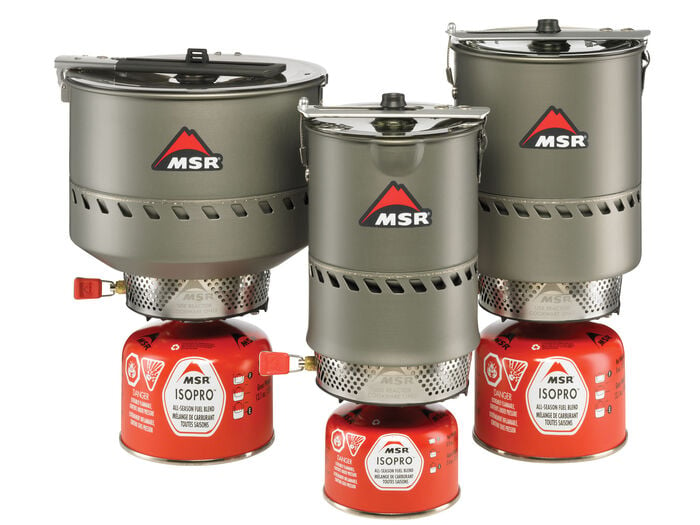
Liquid fuel or canister stove. Between the months of March and June you need to be prepared to melt snow for a water source. The standard pot, or integrated pot size is roughly 1L, though larger capacity pots (1.5L or 2L) will be more efficient at melting snow. After June, a 1L pot is just fine. We sell both liquid and canister fuel at the shop which you can purchase the morning of the course. The exact amount of fuel needed tends to be specific to each course as conditions dictate how much fuel may be needed. This is usually discussed with your Guide in the morning, after which you can purchase the correct amount of fuel in the shop.
Example
i
i
Utensils

Don’t forget the official “most forgotten item ever;” the spork. Longer versions are great at getting the last bits out of your freeze-dried meals. Metal utensils are recommended over plastic as plastic tends to snap when it gets cold.
Example
 --> Sea to Summit Alpha Light Long Spork
--> Sea to Summit Alpha Light Long Spork
i
i
i
i
Bowl

Example
i
i
Lighter

Bring two. Available at the shop the morning of the course.
i
i
i
i
i
i
i
i
i
Hydration

Example
 --> AAI Nalgene Ultralight HDPE Wide Mouth Bottle
--> AAI Nalgene Ultralight HDPE Wide Mouth Bottle
 --> Early Season Bottle Koozie 1L.
--> Early Season Bottle Koozie 1L.
 --> Nalgene 48ox Wide-Mouth Canteen
--> Nalgene 48ox Wide-Mouth Canteen
 --> Platypus Platy 2.0L Bottle
--> Platypus Platy 2.0L Bottle
i
i
Water Purification

Tablets are recommended. Get ones that work in 30 minutes or less. UV light treatment can also be used, but make sure you have batteries or charging capabilities. If you are planning on bringing a filter or pump, make sure to bring a back up system (such as extra tablets in your repair kit), as glacial silt tends to clog these up.
Example
 --> Platypus Quickdraw 1L Filtration System
--> Platypus Quickdraw 1L Filtration System
i
i
Food
You are responsible for bringing your own food for the duration of the course. Please consult our meal planning page. Assume your first breakfast and last dinner will be in Bellingham. It is recommended to include some fresh food in your food plan and refrain from bringing dehydrated meals for every meal to help prevent your stomach from getting upset. On the morning of your course, you will have the opportunity to run next door to the grocery store to grab any last minute items. For AMTL 1 courses, you will have the opportunity to stop by a grocery store in the middle of your course after your time on Mt. Baker.
i
i
i
i
i
i
i
Other Essentials
Toothbrush and Toothpaste

Travel size recommended.
i
i
i
i
i
i
i
i
Hand Sanitizer

Highly recommended. General use before eating and after going to the bathroom.
Example
 --> All Good Hand Sanitizer Gel
--> All Good Hand Sanitizer Gel
i
i
i
i
i
i
Toilet Paper

The provided solid waste bags have a small amount of toilet paper with them, but most people do not find this to be adequate. Estimate how much you’ll need for a program of this length and place that in a plastic zip lock bag. An extra zip lock bag can be helpful for pack-out of used paper.
i
i
i
i
i
Sunscreen

SPF 30+, zinc based is preferred. Small travel size tubes are recommended so you can put them in a close by pocket for easy access. Stick sunscreen is often preferred since it can be applied while wearing gloves.
Example
 --> All Good Mineral Sport Sunscreen
--> All Good Mineral Sport Sunscreen
i
i
i
i
Lip Balm
Make sure it is SPF rated.
Example
 --> Dermatone Medicated Lip Balm
--> Dermatone Medicated Lip Balm
i
i
i
Personal First Aid Kit

Repair Kit
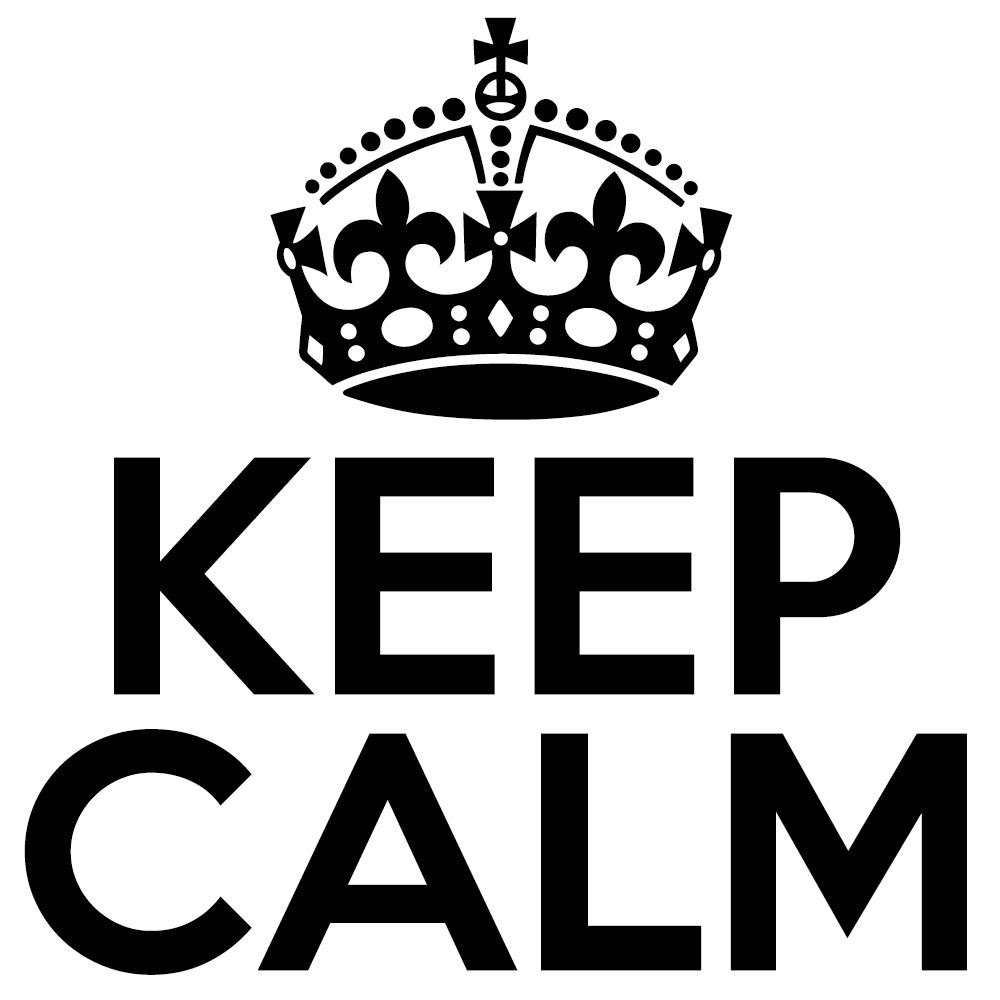
Other Optional Items
*The items below are not required, although many are nice “luxury” items that can make your experience more enjoyable. Take into consideration though that a few ounces here and there add up to extra pounds on your back and knees.
Gaia Navigation App

Map and Compass
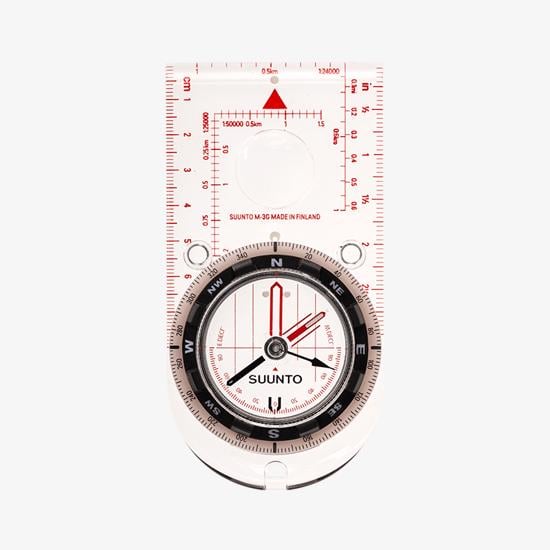
Map and Compass Map should be of Mt. Baker area (preferably Green Trails Maps #13SX). Compass must have declination adjustment.
 --> Green Trails Mt. Baker Climbing Map 13SX
--> Green Trails Mt. Baker Climbing Map 13SX
Belay Gloves
Not required on GSCR, BSC, Glacier Peak, and Shuksan 3-Day courses. Optional on Alpininsm 1, AMTL 1, Alpinism 2, and Shuksan 4-Day courses. Belay gloves are lightweight and breathable gloves with a durable leather palm. They can protect your hands from rope burn, pinching, sharp elements, and dirty ropes while belaying and rappelling.
.
.
.
Altimeter Watch

Example
i
i
i
Pee Bottle

Example
Pee Cloth

Pee clothes are a great way to maintain hygiene in the backcountry and decrease the amount of waste produced (and therefore the amount of waste that has to be packed out. For more info, check out Kula Cloth's FAQ page here.
Example
Urination Device

CLICK HERE for more info!
Examples
i
i
i
i
Menstruation Collection Cup

CLICK HERE for more info!
CLICK HERE for even MORE info!
Examples
i
i
i
i
i
Entertainment
Portable Charging Device
Ear Plugs
Insect Repellent
Camera
Comfortable Clothing and Footwear





